This was Deadwood's second cemetery. Originally there was the Ingleside Cemetery, which was down the hill (currently a residential area). Mt. Moriah was established in 1877 or 78 because of ever-increasing demands of the land at Ingleside. Most of the 122 bodies were exhumed (including Wild Bill) and reburied on the hill... but not all. Every now and then, residents doing a remodel come across some remains.
Some 3,600 bodies are currently buried here, with only about 1/3 of those being marked (due to weather, vandalism, theft and time). At one time, a large number of Chinese were buried here. For religious reasons, most of them were exhumed and returned to China for reburial.
We paid the token fee (which goes toward restorations) and got a map. It listed a bunch of the more "interesting" graves, including Wild Bill. So we followed the numbered tour, not wanting to miss anything.

The cemetery gate carries the symbols from the Independent Order of Odd Fellows, the Freemasons, and the Jewish star.
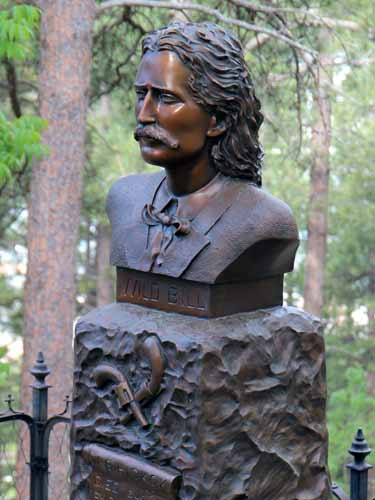
James Butler "Wild Bill" Hickok
Why 'Bill' when his name is James? In his mid-20's, he was derisively called Duck Bill (because of his big nose and protruding upper lip), particularly by a man named McCanles. When there was an altercation, involving the death of McCanles (Bill was found not guilty in a court of law, having acted in self-defense), Bill grew his large mustache and started going by the name Wild Bill (or sometimes Shanghai Bill). He started using William Haycock during the Civil War. But when he was arrested in 1865, he went back to his original name.

While his photos seem to indicate he had dark hair, he in fact had golden blond hair (reddish shades of hair often appeared black in early photographic processes).

Tokens placed at his grave

Martha Jane Burke (one of her married names) is buried next to him.
Jane REALLY liked Wild Bill, perhaps to the point of obsession... claiming to have been married to him and having his child (all claims came out after he had died, of course). Unfortunately there are no clear records to prove this, and at the time of his death, Bill was married to another woman. So why is she buried next to him?
Apparently the men who planned her funeral stated that Wild Bill had "absolutely no use" for her while he was alive. So they decided to play a posthumous joke on him by giving her an eternal resting place by his side.
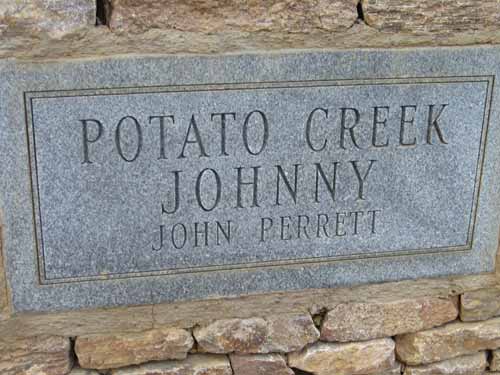
John Perrett (or Potato Creek Johnny) was a prospector of the Black Hills who pulled out the largest gold nugget ever found in that area while placer mining (using the pan in the river) Potato Creek.... although some say it was several nuggets melted together.

Henry Weston Smith ("Preacher Smith") was Deadwood's first minister (and a doctor) and an outstanding individual liked by the entire community. One Sunday, while going to the neighboring community of Crook City to give a sermon, he was killed... presumably by Native Americans, although his body had not been mutilated and he was not robbed. His death outraged the community far more than Hickok's did.
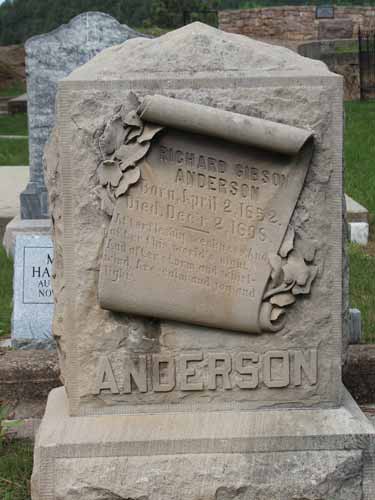
Richard Anderson was a brilliant mining engineer and surveyor. For unknown reasons, he suddenly went mad and was taken to the hospital where he killed himself using a screw hook taken from the wall of his room.

Edwin Horsefield had both legs crushed in a mining accident. He died after lingering in agony for two days. There are many tombstones of those who died as the result of mine disasters. Note the symbol for the Masons.

More violent deaths

Prentis Bernard (or Vinegar Bill) fell in love with one of the town's "soiled doves" who worked in one of the more notorious brothels. Finding her with another man, he shot and wounded his supposed rival. A struggle ensued and Bill was shot and killed. After 10 days, no one claimed the body, so it was buried stark naked in a coffin that was several inches too short.
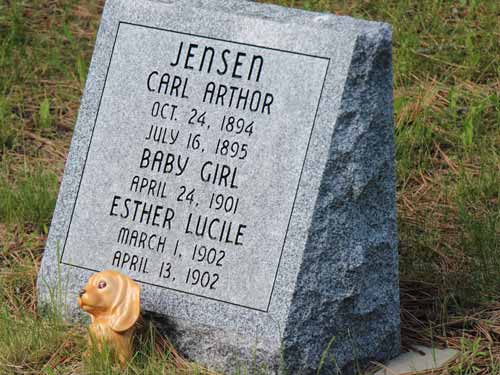
Mortality rates for children were high. It is estimated that 1 out of 5 babies born would die before the age of one. There were also several epidemics of smallpox, scarlet fever and diphtheria from 1878 to 1880.


Not all stories were sad or violent. John Hunter was a successful businessman and his family has been a positive force in Deadwood for over 100 years.

Dora Dufran ran several brothels and she was known for her kindness. She is buried next to her husband, Joseph, and her parrot, Fred.

In his last years, John McClintock wrote a book about Deadwood and its early history.

Blanche Colman, along with two of her sisters, were the only survivors of seven children. Then the family store burned in 1879, and in 1894 they again lost everything (both store and home) in a fire. But they rebuilt again. Blanche graduated from high school and worked as a congressional secretary in Washington DC. Upon returning home, she studied law on her own (she never attended college) and became South Dakota's first female lawyer.

Harris Franklin, a Jewish immigrant, was Deadwood's richest man... with an estimated worth of 5 million dollars. His wealth came from investments in the liquor business and mining industry.

Brown Rocks Overlook, with the city of Deadwood below
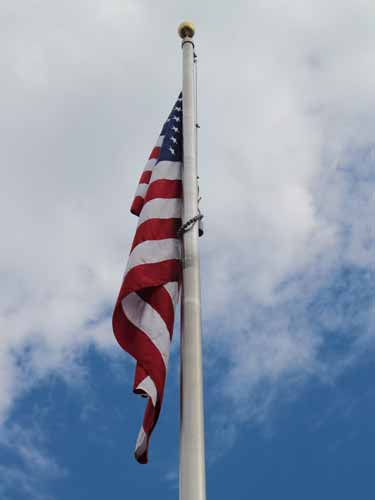
The flag never goes down here. It was granted permission by Congress during WWI to permanently fly in honor of all veterans who have served the country. It is one of the few spots in the country afforded this honor.

Civil war veterans section

We then hiked to the top of the hill for the lone cemetery of Seth Bullock, Deadwood's first sheriff. He requested being buried up here, overlooking Mt. Roosevelt.

Bullock's grave...

... and eternal view.

A chipmunk reminds us to stop and smell (or eat) the flowers.


Hmmm, kind of an unfortunate name

In the gift shop, there was also a great small museum.

These are some of the more unique causes of death as recorded in the cemetery from 1879 - 1898. 48% of all recorded deaths were from disease or infection. Accidents were the second highest cause (mainly from the mines). Murder, capital punishment and violent death claimed the lives of 77 individuals in Lawrence Country during that time... two were the murders of Wild Bill and Preacher Smith, and three were public executions of convicted murderers.

Bill original grave at Ingleside
Throughout the years, Hickok's grave was subject to repeated vandalism by souvenir hunters. Wood and stone markers didn't stand a chance. The current memorial was dedicated on August 2, 2002... the 126th anniversary of his death.

One of his original wooden markers
We then headed off to the Badlands... until numerous (and I mean numerous!) billboards enticed us to stop at Wall Drug on the way.... promising things from 5 cent coffee to 6-foot rabbits and an animated T-rex. We had no choice... we simply HAD to see this place for ourselves.
Wall Drug is an enormous store... filled not only with mountains of merchandise, but also food, entertaining attractions and historic photos. The small drugstore in the middle of nowhere was originally purchased in 1931 by Ted Hustead. Business was slow until his wife, Dorothy, got the idea to advertise free ice water to travelers headed to the newly-opened Mt Rushmore (60 miles away). From then on, it only spiraled upwards, adding new stores, artwork and wacky things to do.
We found out later that much of its fame comes from its billboards, which can be seen for hundreds of miles throughout South Dakota and the neighboring states. As much as I don't want to admit it, it worked on us.
We pulled in and found parking quite easily. We got a map but wandered aimlessly anyway.

